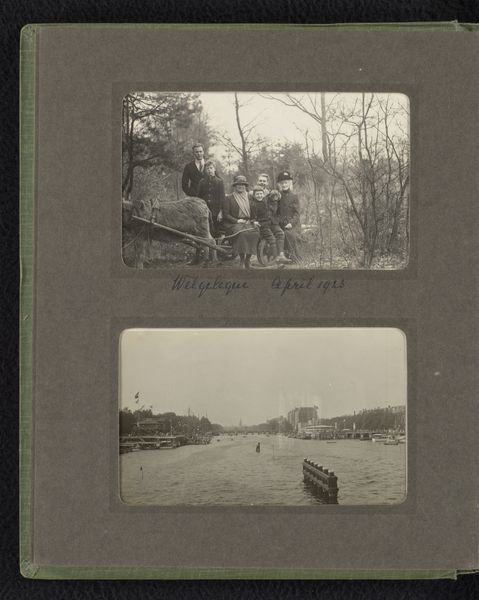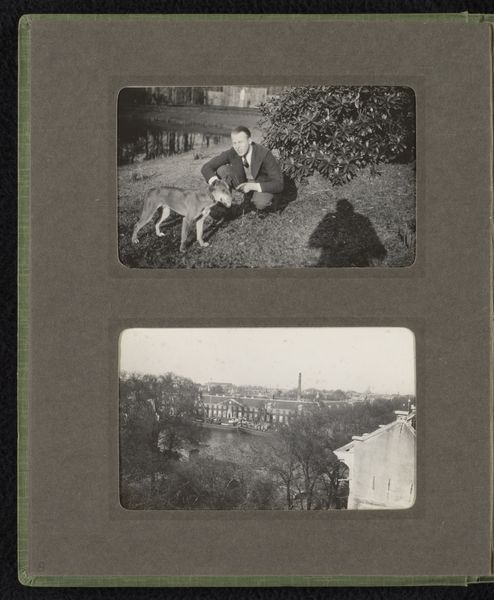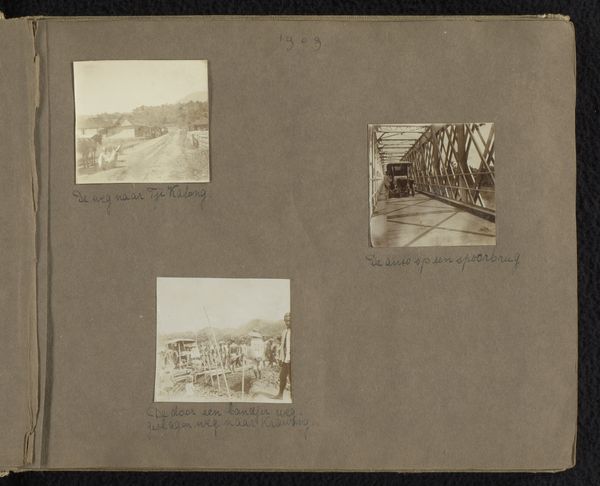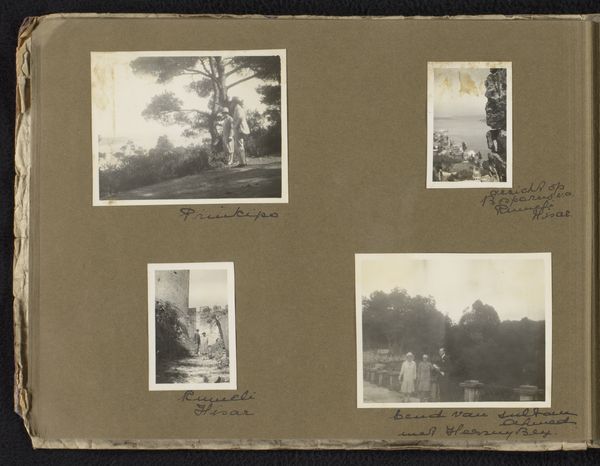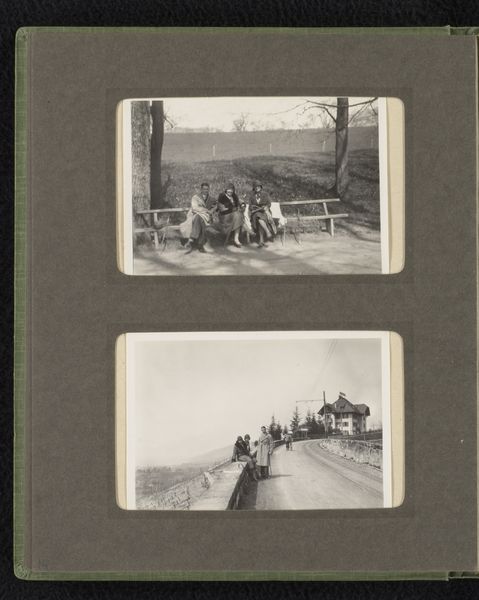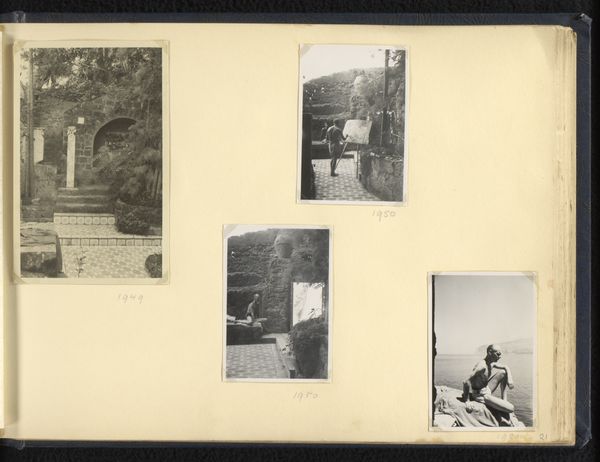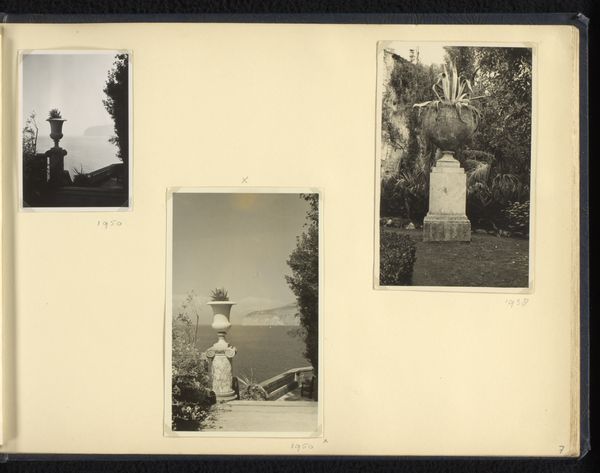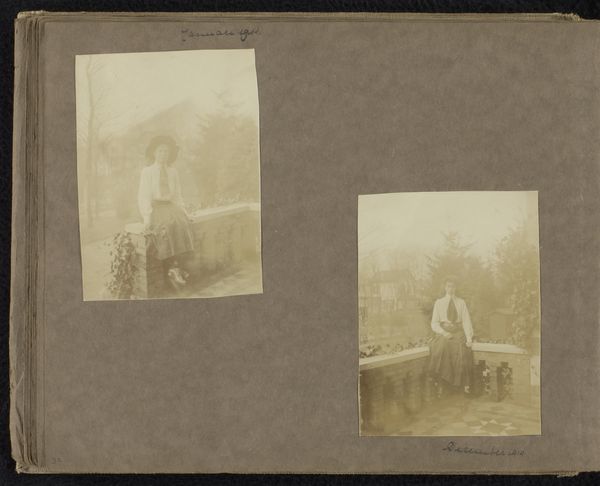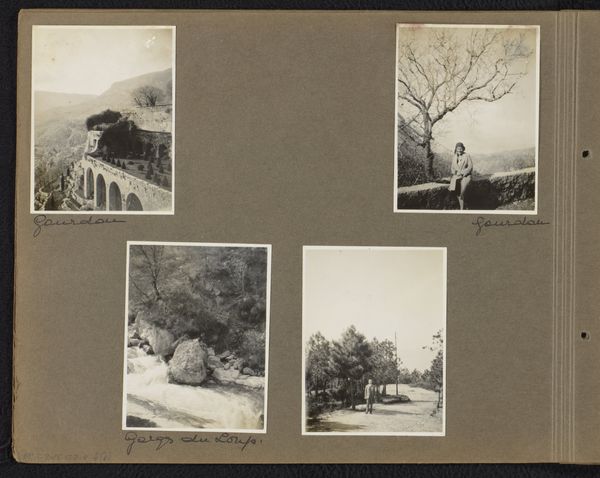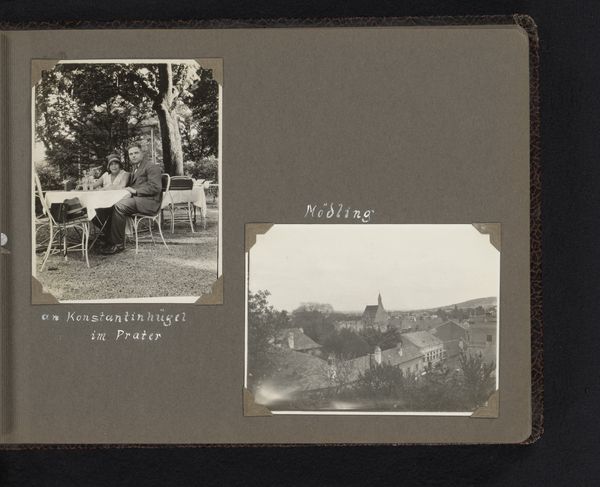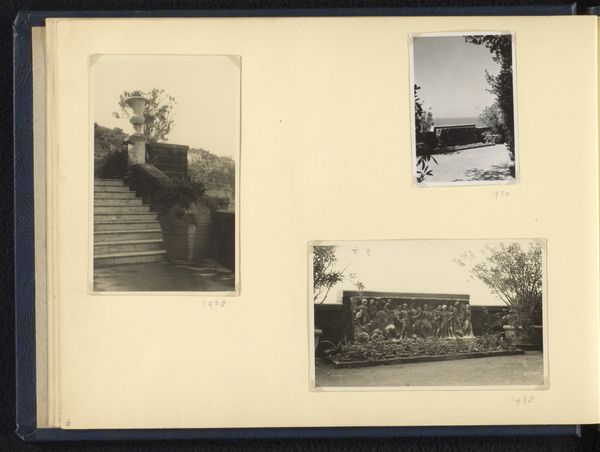
Twee foto's van de familie Van den Berg in Valkenburg, mei 1923 1923 - 1925
0:00
0:00
photography
#
portrait
#
toned paper
#
pictorialism
#
landscape
#
street-photography
#
photography
#
realism
Dimensions: height 243 mm, width 198 mm
Copyright: Rijks Museum: Open Domain
Curator: Editor: Here we have two photographs by Hendrik Herman van den Berg, both taken in May, one in 1923, the other in 1925. They seem to show family in the town of Valkenburg. I'm immediately drawn to the almost staged quality of the family portrait; what should we read into this scene, captured in this manner? Curator: Precisely, the "staged" quality is key. Looking at these images, I’m interested in the visual rhetoric employed to convey bourgeois identity in the interwar period. What narratives are constructed through this calculated presentation of family within a specific landscape? Think about it - who has the privilege of leisure time, of documenting these moments? Editor: So, you're suggesting that these aren't just simple family snapshots but rather deliberate constructions reflecting class and social standing? Curator: Absolutely. Consider the formal attire, the setting. These choices speak volumes about the aspirations and self-perception of the family within the broader social landscape. The second image, a townscape, functions almost as a backdrop, situating them firmly within a space of ownership and belonging. Can we think about the colonial context of this family during this period? Editor: That’s fascinating. I hadn’t considered the implicit power dynamics at play. The photographs aren't just about remembering a vacation; they're about reinforcing a certain image. Curator: Indeed. How might we understand these images in relation to contemporary debates around representation and the gaze? These photographs invite critical inquiry into how families from specific socioeconomic backgrounds wish to be remembered and immortalized. Editor: It shifts my perspective entirely. I see them now as a window into a very specific historical and social context, one filled with intentional messaging. Curator: It’s a constant process of unpacking, isn’t it? Of questioning whose stories are told, and how.
Comments
No comments
Be the first to comment and join the conversation on the ultimate creative platform.
